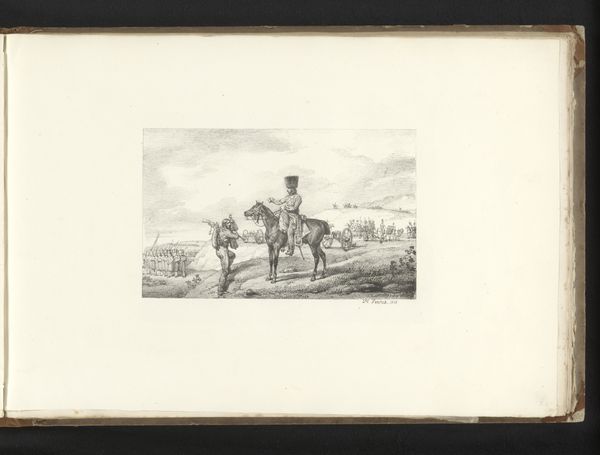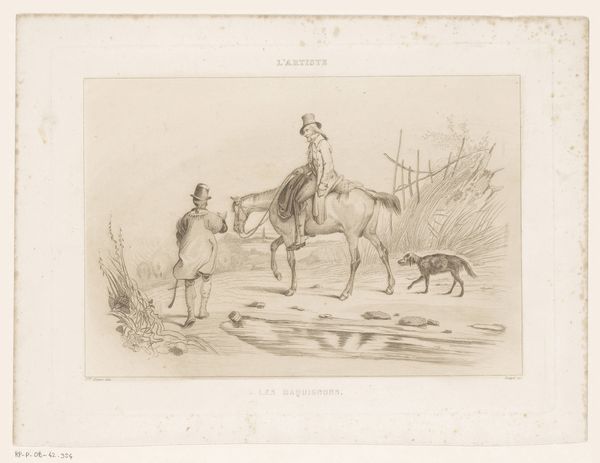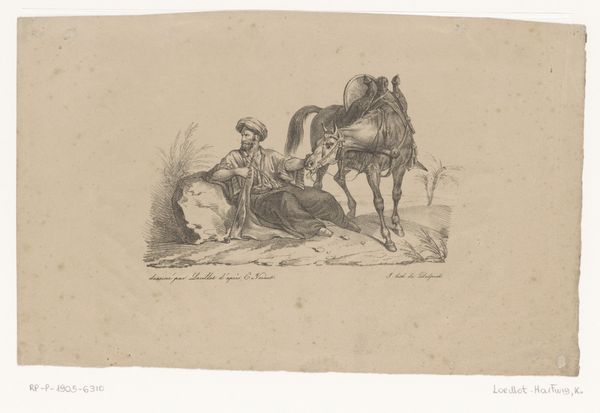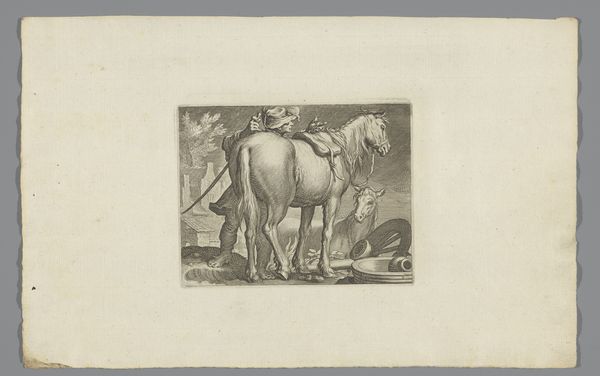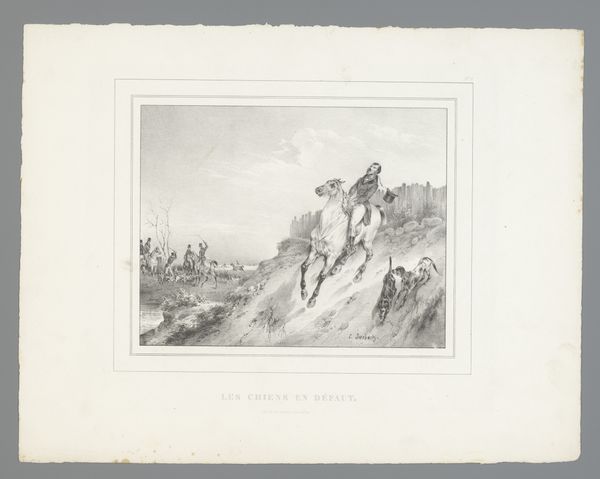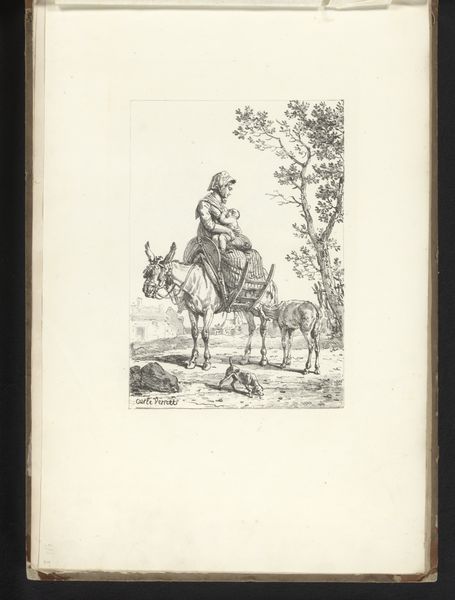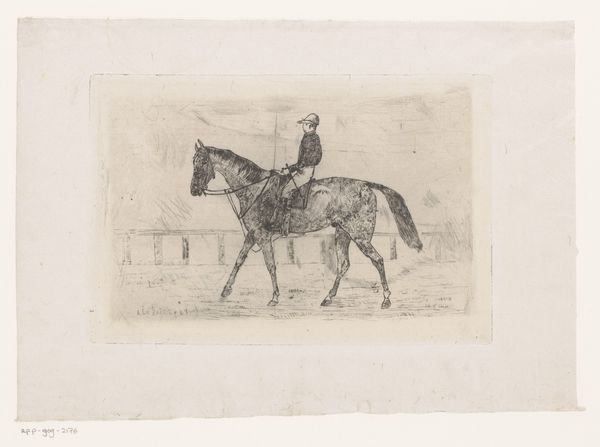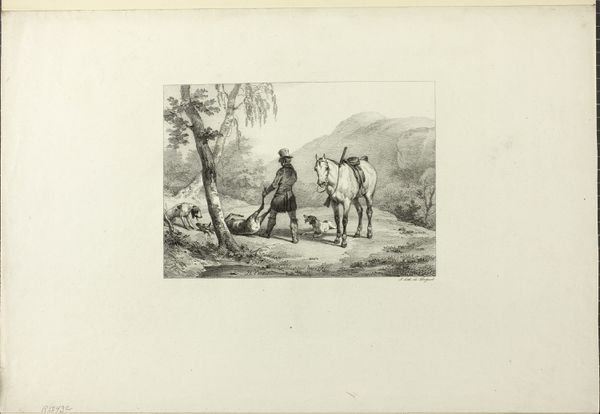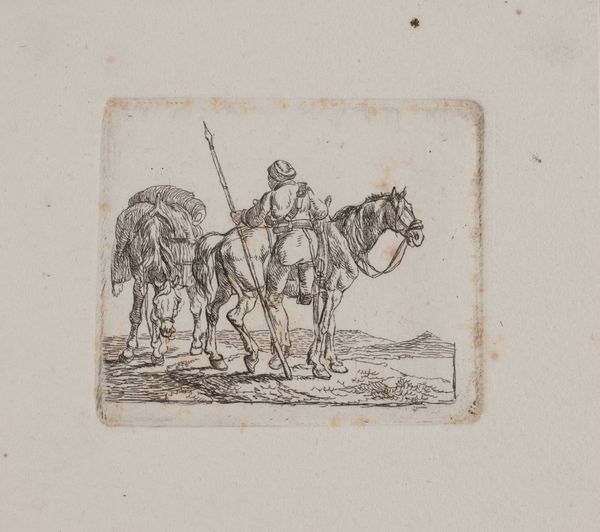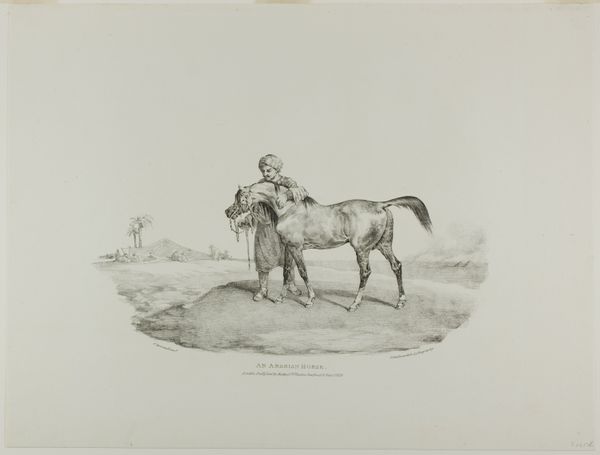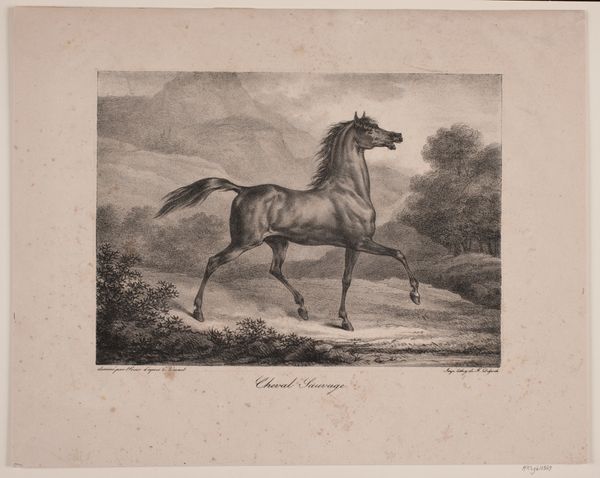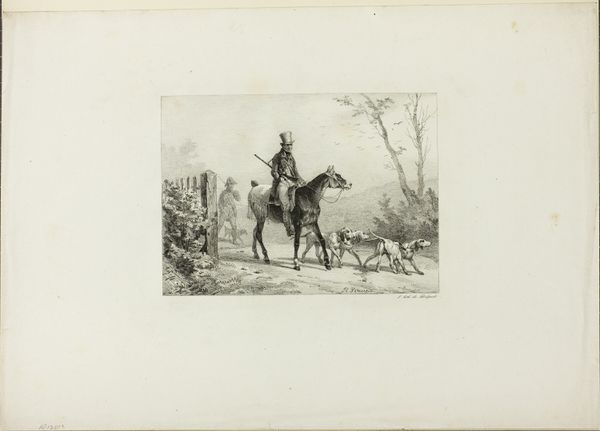
drawing, pencil
#
drawing
#
pencil sketch
#
landscape
#
figuration
#
romanticism
#
pencil
Dimensions: height 302 mm, width 442 mm
Copyright: Rijks Museum: Open Domain
Curator: This pencil drawing, Soldaten met paarden en een olifant, which translates to Soldiers with horses and an elephant, was created around 1818-1819 by Carle Vernet. What strikes you about this particular work? Editor: The initial impression is quite striking in its romantic exoticism, a stark vision seemingly extracted from colonial narratives. There's a clear power dynamic being depicted here; the grandeur feels inextricably linked to exploitation. Curator: Note how the artist renders each figure with such precision. The detail in the horse's trappings, for instance, emphasizes its materiality and contributes to the overall composition of controlled, meticulous lines against subtle tonal shading. Editor: Absolutely, and that detailed rendering plays into the glorification of empire. Look how the soldier guides this powerful, ornamented horse. It underscores themes of ownership and domination over nature and, implicitly, people. What I find disturbing is that even the romantic style seems designed to normalize this display. Curator: But it also serves to elevate the artistry. Romanticism valued emotion and subjectivity. The detailed pencil work, the very form it takes, draws us into a certain idealised perception. Don't you find the composition to be more than mere glorification? Consider the placement of the figures and the delicate lines composing the landscape in the background, which softens the scene. Editor: I acknowledge the skill in execution. However, as someone whose lens is social justice, I have trouble detaching the work's beauty from its underlying politics. Seeing an elephant, which obviously does not come from this setting, surrounded by armed men does little to make the landscape in the background softer. To see it here is a visual manifestation of power dynamics where natural order and social structures are shaped by force. Curator: That tension, between appreciation of craft and acknowledgement of content, is a space ripe for ongoing conversations. This drawing really highlights how artwork encapsulates many truths, many different opinions, which makes the whole museum-going experience so compelling. Editor: I couldn't agree more. To engage critically with the art of the past allows us to understand not just artistic evolution, but how dominant ideologies shaped perspectives, which inevitably affects our understanding of the present.
Comments
No comments
Be the first to comment and join the conversation on the ultimate creative platform.

